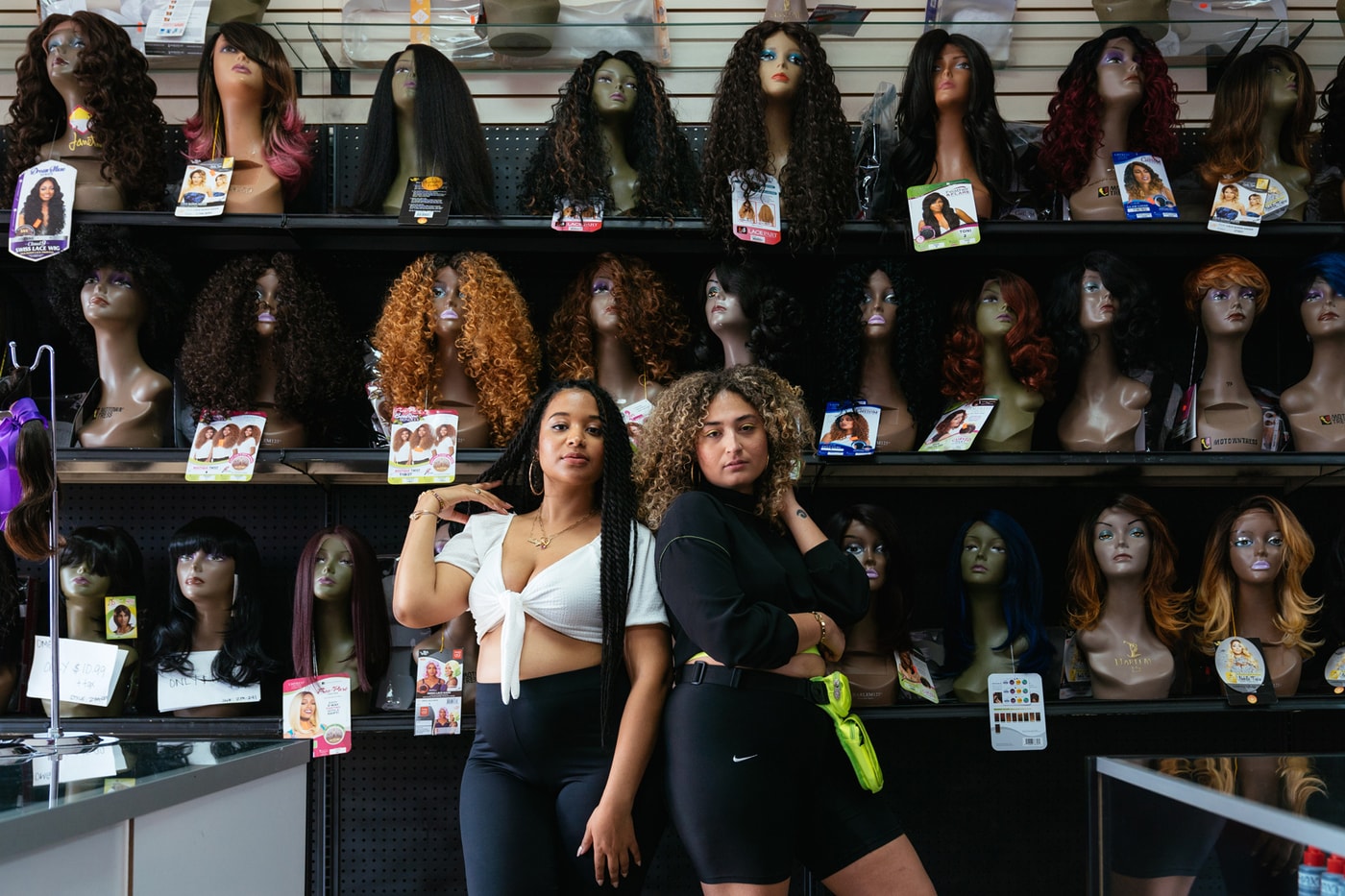
For African-American women, beauty supply stores offer an assortment of hair products and accessories that are a part of their everyday lives. If you’re looking for bundles of weave, lashes, braiding hair, statement earrings or anything that falls within these categories, these stores are where you’ll undoubtedly go. What many black women have come to understand throughout their younger years and as they move into adulthood is that these shops define who they are. It’s somewhat of a rite of passage to find yourself and come to understand your version of beauty with the assistance of a beauty supply store. A few months ago a team of creatives Audrey Williams, Marissa Pina and Joe Schaefer set out to tell the unsung truths behind these shops.
Providing a juxtaposition throughout the film is the comparison of Asian-owned stores which have a stronghold on the black hair care industry alongside Jeffrey Beauty Supply, a black-owned store in the Brooklyn neighborhood, Crown Heights. Partially owned by Ogunkeyede, she notes in the film that she has experienced issues such as stocking and being blatantly ignored when seeking to create relationships with suppliers. The dissection of the black dollar is also a poignant breakdown that was essential to the film. It provides a moment of reflection since there are roughly 3,500 stores of this type owned by African-Americans. To drive the point home there are reportedly a total of 35,000 of beauty supply stores in the United States alone, as reported by Shoppe Black.
The documentary paints an accurate portrayal of the importance these shops have on black communities. The project presents the ideal of questioning why the black dollar isn’t being funneled back into black communities since the stores are not owned by African-Americans. Black ownership, the dark story behind skin bleaching products and Western beauty are topics also explored in the film which has been shown in Brooklyn and D.C. so far.
Read below for our in-depth interview with the two creatives as they divulge inspirations behind Black Girl Church and the conversations they hope to open up.
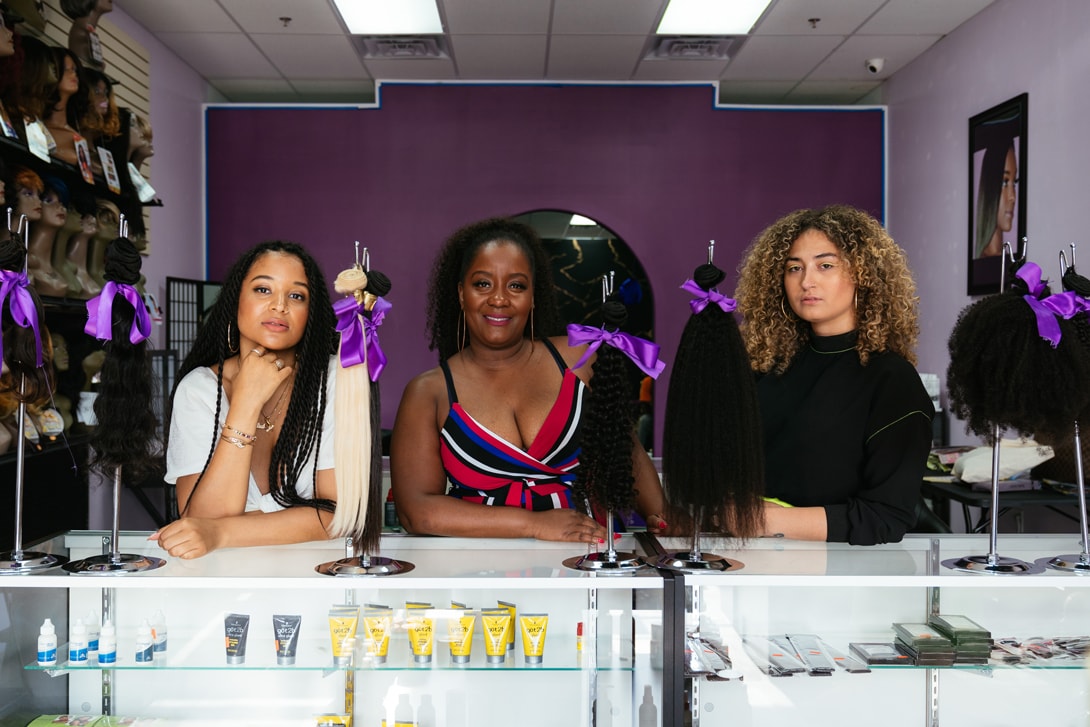
Audrey Williams, Sade Ogunkeyede, Marissa Pina
AW: Beauty supply stores have always played some role in my life, in terms of it being one of the first places where I had access to what I needed to take care of myself. My mom, my aunts, my cousins — it was universal to just about all the black women I’d ever known. And I wondered why. Why we all came here, how it came to be that this place was the place we had to cater to ourselves. I knew I wanted to find out and share what I found with the women who, like me, laid the foundation for their image at these places. I wanted it to be visual and intimate, much like the beauty supply store experience itself, and I just felt like a documentary would do it justice.
MP: I agree completely with Audrey and when she brought the idea to me I instantly knew that this was a story that we’ve not seen told visually before and that women were looking for. We wanted to create a film that we knew women would feel seen and heard throughout it. It was important [for] us to center women who are typically not centered and tell their stories through their own voices.
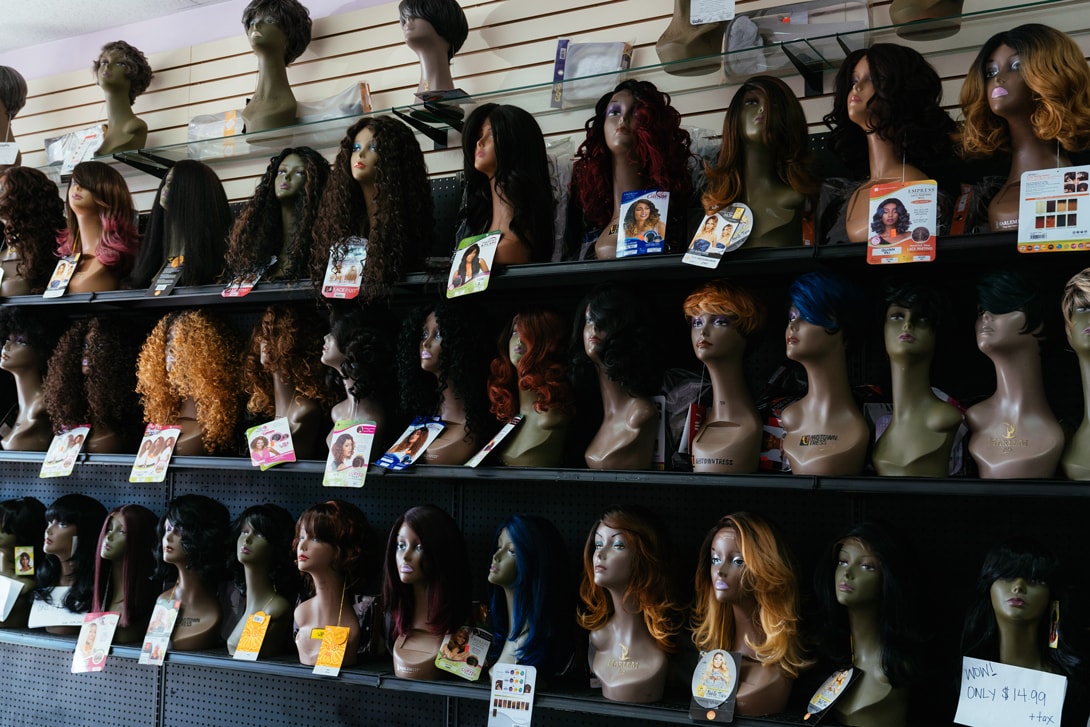
When you two were in the preliminary stage of planning alongside your third partner, what were you essentially looking to make happen?
AW: Being the least familiar with a long-form video project, I kind of came in with all my wild dreams. I wanted to tell this story, with beautifully shot elements — this was about black beauty and I wanted to show how beautiful black women were and how beautiful our rituals could be — but also to do it in like four months with limited equipment and crew. I needed Marissa and Joe to come in to check me, keep it realistic, but I also trusted them to keep true to the vision.
MP: When Audrey came to me, and later when I pulled Joe into the project, we wanted to ensure that we were able to tick the boxes Audrey was looking for, meaning it needed to be visually compelling, an artistic love letter of sorts. I knew that we could do that, but I also wanted to humanize the story and align it with narratives we don’t really think of or hear when we think of the beauty supply store right away. Our biggest goal out of all of this was truly to just create a film from start to finish that was uniquely our own and beautiful. We wanted to be able to say, ‘We actually finished something we started that wasn’t involved with our 9 to 5 jobs, we did something for ourselves and hopefully people like it.’
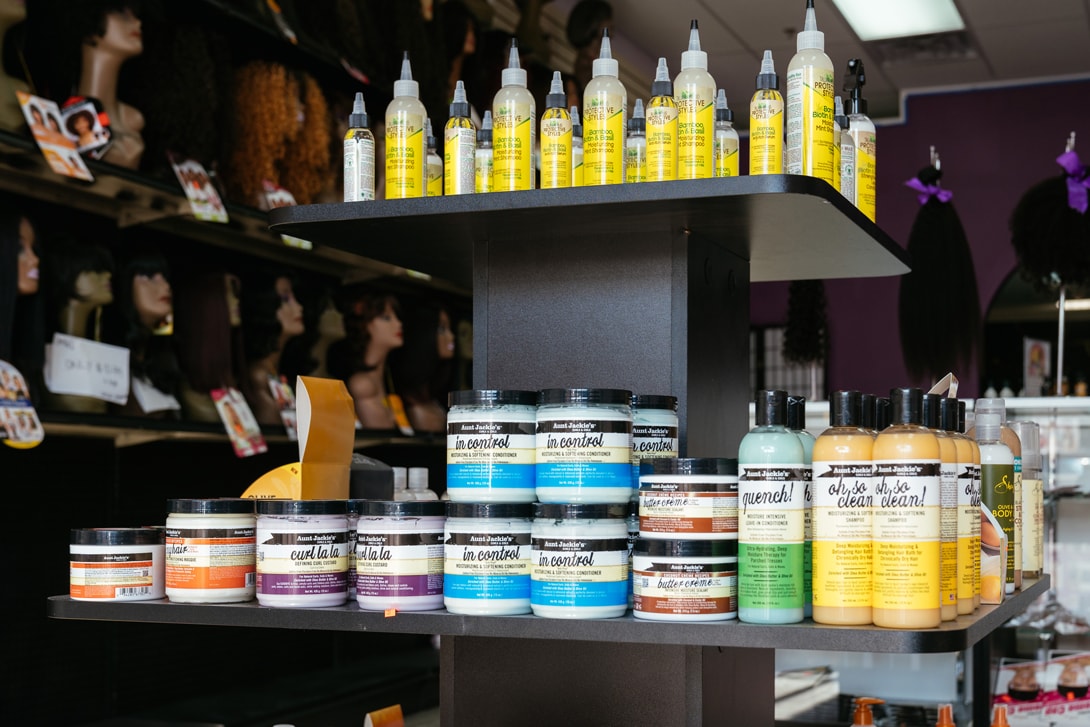
Can you both share your personal experiences with beauty supply stores?
AW: Beauty supply stores were always around, for me. I grew up in a mostly Caribbean part of Brooklyn, and as long as there were black people who needed to have their hair done to look good for school, work, the weekend party, there was going to be a beauty supply store. My mom went [there] for her [Luster's] Pink Sheen Spray and pantyhose, her $1 USD black eyeliners. She got me bubbles, bows, and clips for my hair. I grew up knowing that this was the place you went to make yourself look the way you wanted, to take care of the specific things you needed as a black woman, and that you could do it here for much cheaper than anywhere else.
MP: I grew up in a predominantly white area and actually never really went to a beauty supply store until I was in college. I had gone to Sally’s and other “beauty supply stores” as a kid and even then I was always fascinated with it, but I never found things that would work for my hair there. Thus, I damaged my hair considerably my entire life. I first walked into a beauty supply store in Philadelphia when I was a freshman in college and I remember other freshmen students mocking the store, calling it the ghetto store which in and of itself was an issue and pissed me off, but I remember always being drawn in and loving being there. Was it because I could finally find products for myself? Maybe. Maybe it’s also because I’m obsessed with wigs and all things beauty products, it’s almost therapeutic for me, back then and even now. I just went to one this afternoon because I wanted a pick me up.
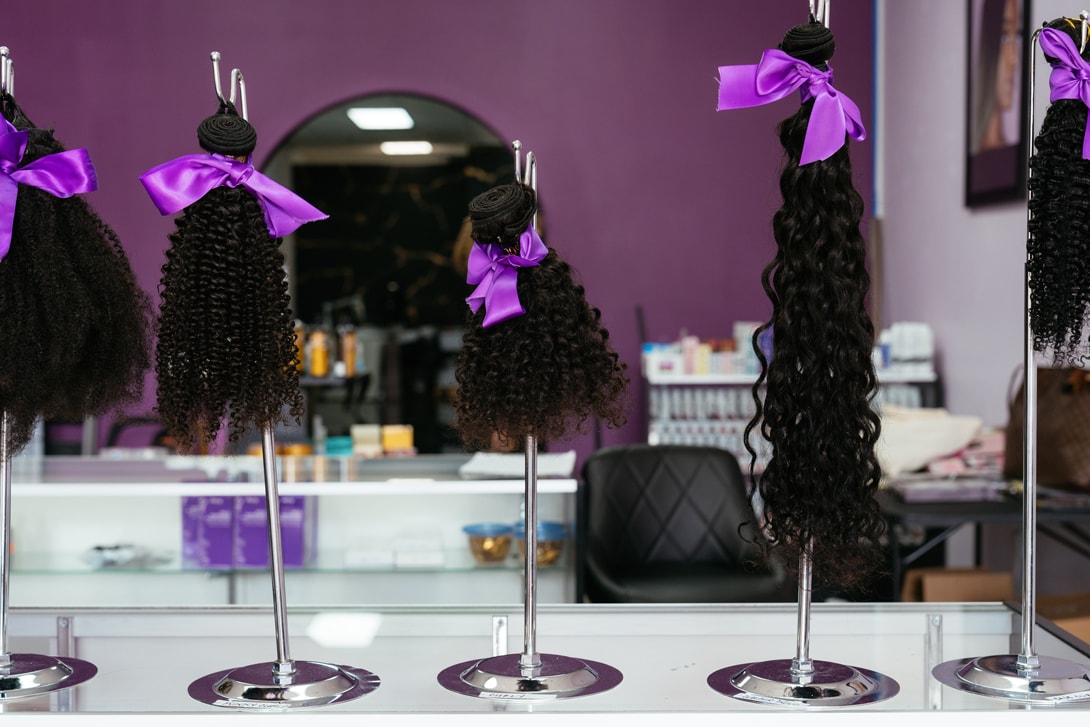
Why was it important for the documentary to include the history behind why the majority of beauty supply stores are Asian-owned?
AW: That element evolved the more we interviewed people. It just came up naturally, and initially, I hadn’t thought about diving too deeply into it. I wanted to make this doc a celebration, something to showcase our magic, something to make us feel good. But, like with most things in regards to black women and black people, there’s always a darker side. Most of the amazing things we’ve accomplished has come as a result of some negative things. Even beauty supply stores themselves. Not just the ownership of them, but the need for a separate place just for us. We couldn’t get what we needed where everyone else could. In order to tell this story honestly, we had to. We decided that it wouldn’t take away from the magical feeling of the doc and decided to chase that part of the story more. To give it more of a purpose.
MP: I come from a hardcore journalism background and when I first heard what Audrey wanted to do with the piece, I loved it but something deep down told me that there was a bigger story here. There was something more to be explored and exposed. Like Audrey said, that part kind of came naturally through every single interview we conducted. By the end of our interviewing process, we all looked at each other and knew this was a part of the story begging to be told. And to be honest, who doesn’t walk into a beauty supply store and notice this? Who hasn’t felt uneasy or watched?

What led you both to select the key personalities in the documentary?
AW: I worked in the beauty space with editors, brand ambassadors, influencers, and I knew they’d be the people who would have a lot to say. They’d experienced so much as black women on both sides of the beauty world, personal and professional. But also, I’ve been blessed to know some amazing black women. Poets, artists, businesswomen. The truth is the beauty supply store is a black experience. Just about any black woman I asked to speak on it would’ve had a memorable story to tell.
MP: I was really drawn to the women that Audrey had pinpointed to be apart of the project, even some of them were just women that we’d hoped would say yes to our crazy project. We’d never even met some of the women before this documentary. However, we were super intentional as well as the type of women we casted. We felt that it was extremely important to center women that would make other women watching the film feel seen. I wanted women to watch this film and see themselves in Kelly, Sesali, Leeza, Marjon, Audrey and Avielle. They’re all incredible and all represent diverse, real women who deserve to be heard.
What is the strongest cultural message the documentary paints?
AW: I think the strongest cultural message would be that we have to take ownership of our culture. There are so many things that black women and black people create and nurture, and if you look at it, we don’t have ownership of it. Whether it’s the actual beauty supply store or the origins of the trends themselves. I don’t want us to stop going to beauty supply stores or stop sharing our secrets. I just want us to be in charge of them.
MP: As for myself, I feel that the message that stands out for me is the idea of supporting black-owned businesses and entrepreneurs. I wanted this message of trying to support and uplift our own community via our dollars to come through. It’s crazy, but it’s something we don’t often think of or try and execute and it can truly make all the difference for not only one person, but for the entire community.
Do you believe black women’s dollars would be better spent at black-owned stores?
AW: One of the things we didn’t get to include in the final film was the breakdown of how shopping at one black-owned store and keeping dollars in the black community increases the chance for future black-owned businesses to flourish. When one does well, it opens the door for two more to do well. And that [there are] three black people who have been able to break the cycle because you went out of your way to support.
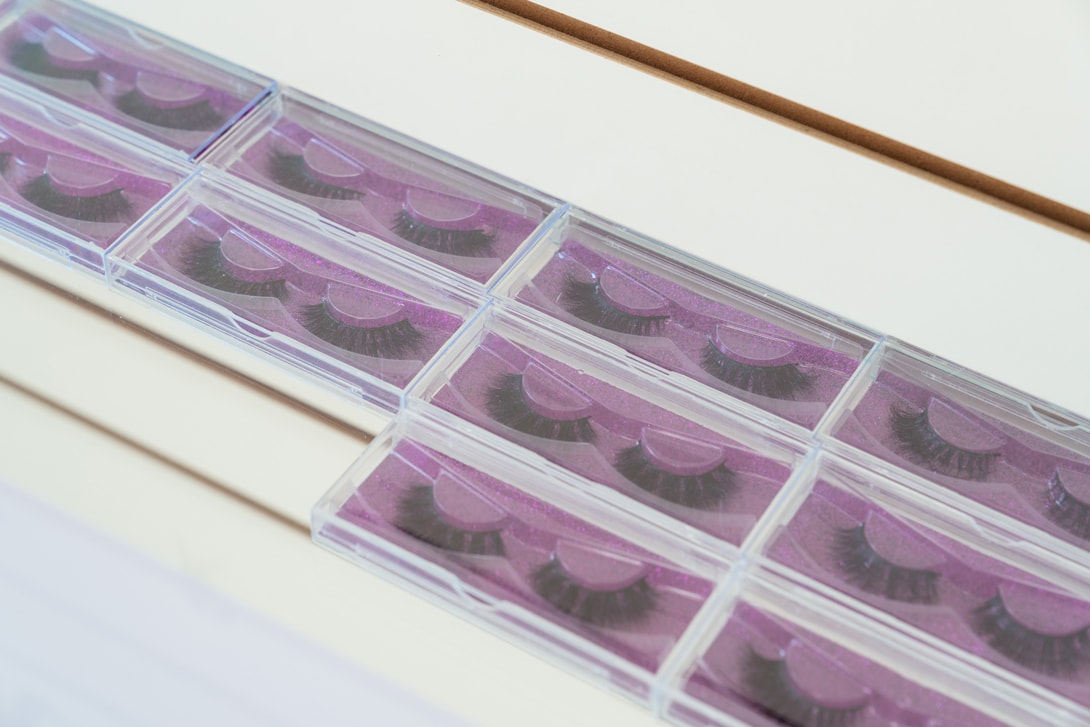
Can you express your feelings on mass consumerism and black wealth?
AW: I think consumerism, in general, has gotten out of control, if I’m being honest. Even going into a beauty supply store, I know I don’t need another curl butter, but I’m always like “damn, it’s only $5 USD. What’s $5? I have that.” And it gives you that little boost of excitement. Something to look forward to. It’s a psychological thing, and for that reason, I don’t see it stopping anytime soon. That’s why I’m of the belief that if people are going to go out and buy these things anyway, let it be from a black-owned business. At least then you’ve helped someone in your community, someone who is systematically kept out of spaces, get a seat at the table.
MP: I also think that we’re up against something greater than other communities, obviously, but this is why it’s so important to cultivate a mindset of spending within your community. We often have a hard time being able to generate generational wealth, and to me the best way to do that is to spend within your community. Invest in yourself and your community. You’ll feel better every single time.
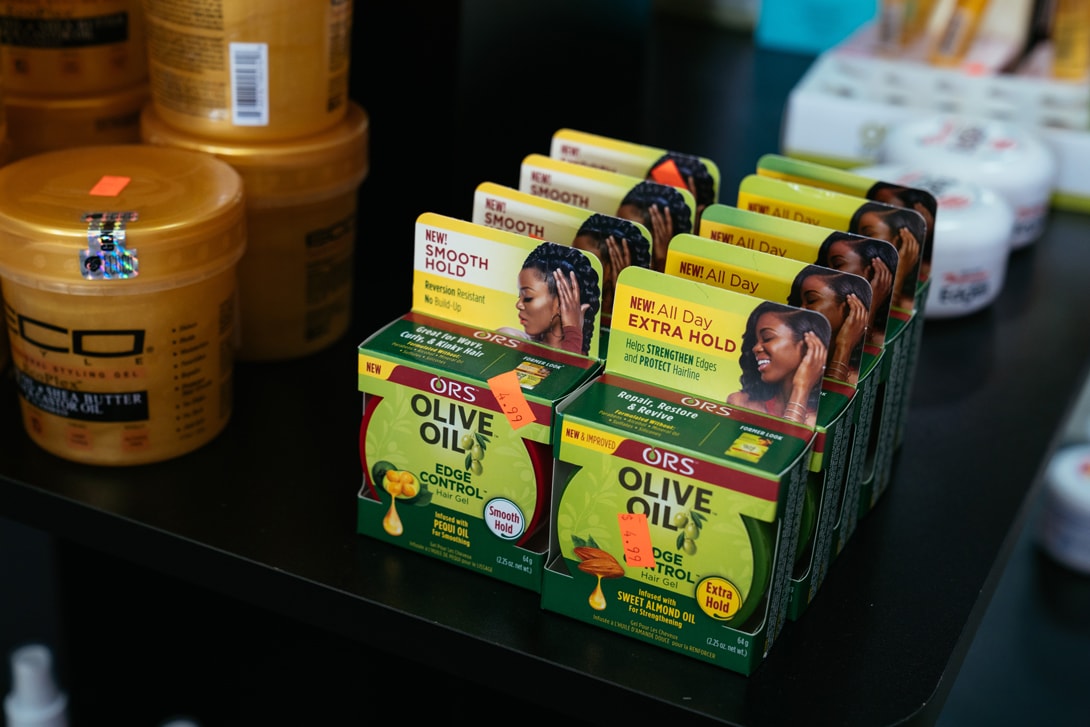
When you both chose to include the black-owned beauty supply store Jeffrey’s in your film, was this a conscious choice that you felt was absolutely necessary?
AW: Yes. It was a later addition to film but it came after we had so many soundbites of people questioning the Asian ownership. “Why don’t we own them?” kept coming up. So, we wanted to answer that question by showcasing someone who did own one. We learned so much from Sade. I’m so grateful for her story.
MP: As I said earlier, we wanted to center the voices and stories of black women and let them tell their own story. Well, when we kept hearing the same questions over and over again about why we don’t own beauty supply stores and why they’re completely Asian-dominated, I felt that the best thing to do is to show an actual black-owned store and Sade tell you her own story and her own obstacles. I often find that when I watch the film when we heard Sade’s story with Jeffrey’s Beauty Supply that she is the piece that humanizes the issue we’re talking about. She so clearly shares her struggle with us and it’s what mobilizes the entire film and conversations we’ve had afterward.

What types of conversations would you like to see generated with the scheduled screenings?
AW: I love the immediate recognition I see at these screenings, every woman nodding their head, feeling seen and heard. I love the conversations that come from that. But the more powerful conversations are the ones that inspire action. People want to find out where their nearest black-owned beauty supplies are [and] what other local black businesses they can support. I want people to not just think, “oh, yeah, I should do that.” I want them to see why they should. That “why” is what actually gets people to make change.
MP: I agree completely. It’s so moving and so amazing to see such impactful conversations generated following viewing Black Girl Church. I love seeing a group of otherwise strangers sit around and be able to relate and create a community. We’ve had people bond over even just talking about how politicized their hair is in the workplace, their families’ reactions to their big chops and openly admitting that they’d never thought to go out of their way to support black-owned beauty supply stores. Just this past week in D.C. the entire room conversed about the issues we raise in the film and started brainstorming black-owned businesses in the area that they should support. Business owners in the screening were handing out their information. It’s motivating change like that that makes this all worth it.
- Location
- Jeffrey Beauty Supply

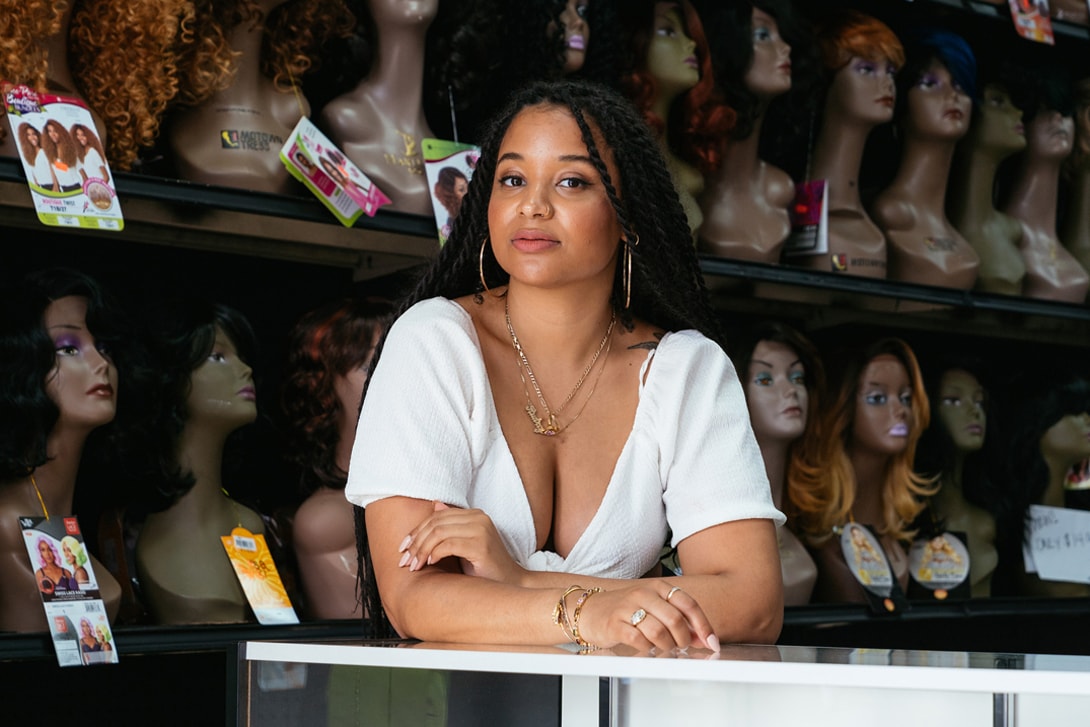
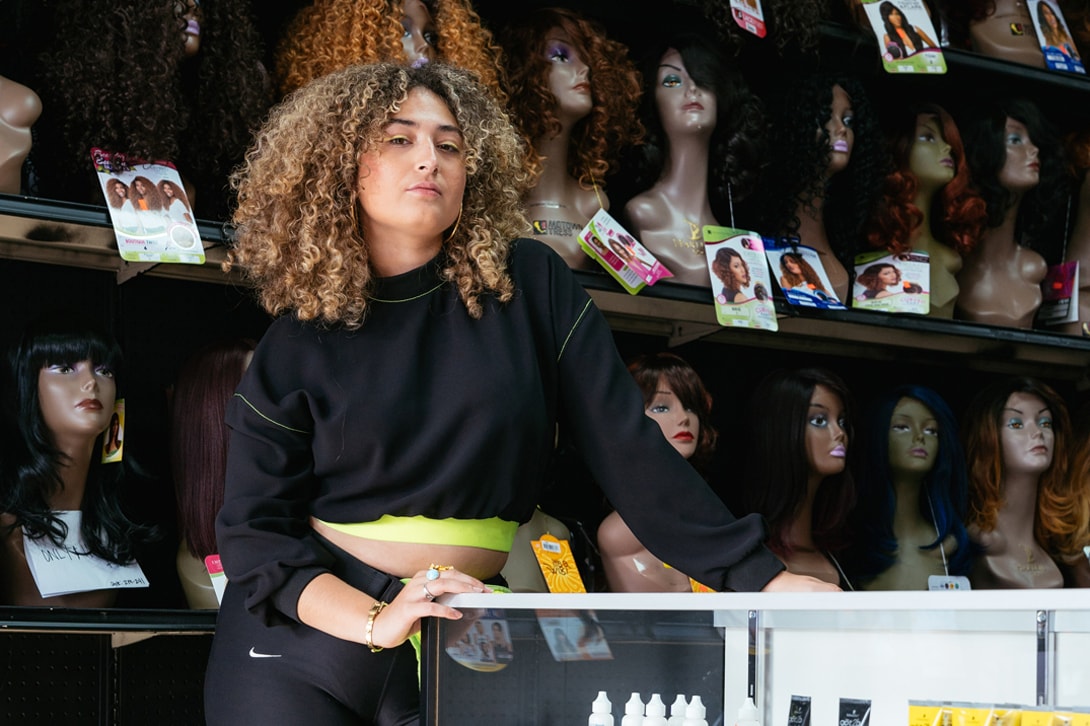
No comments:
Post a Comment